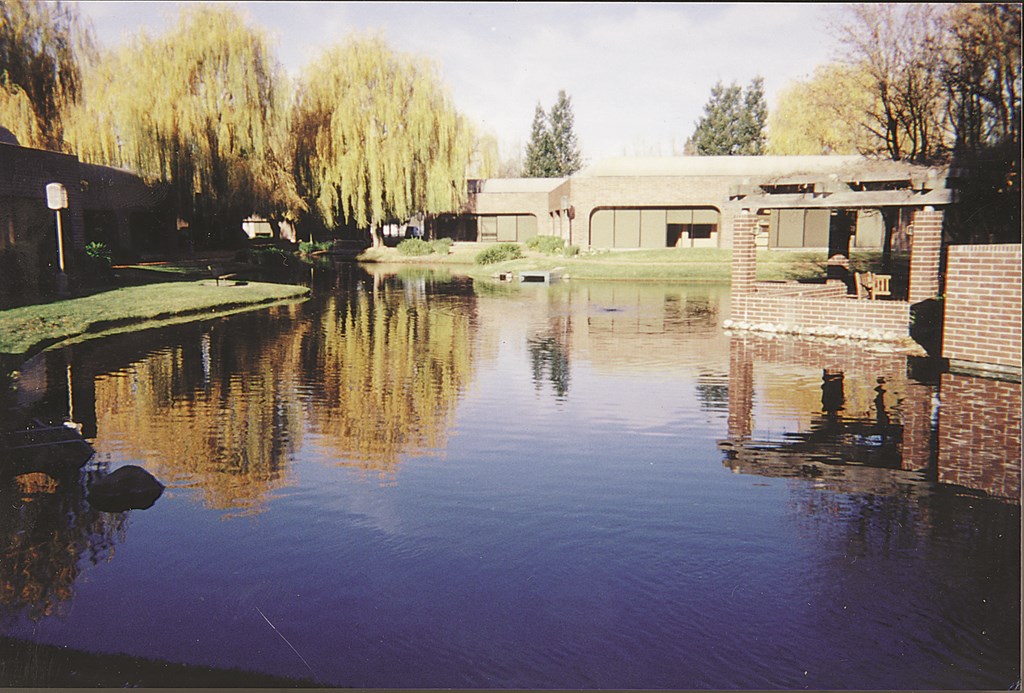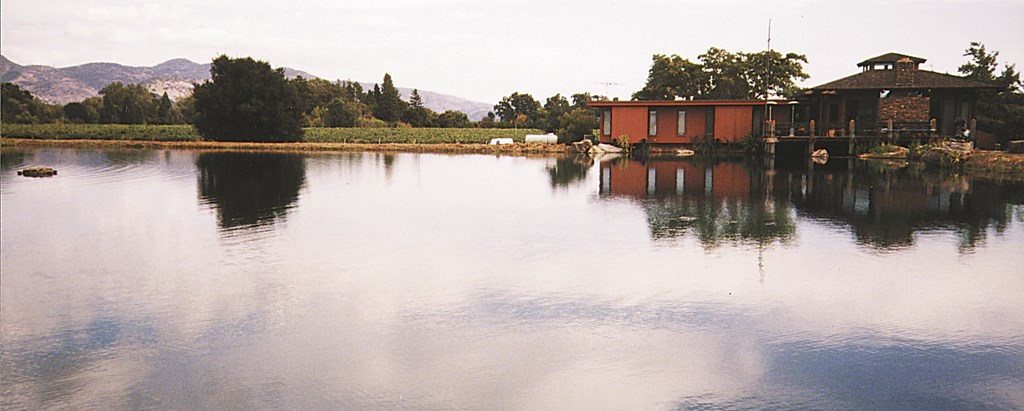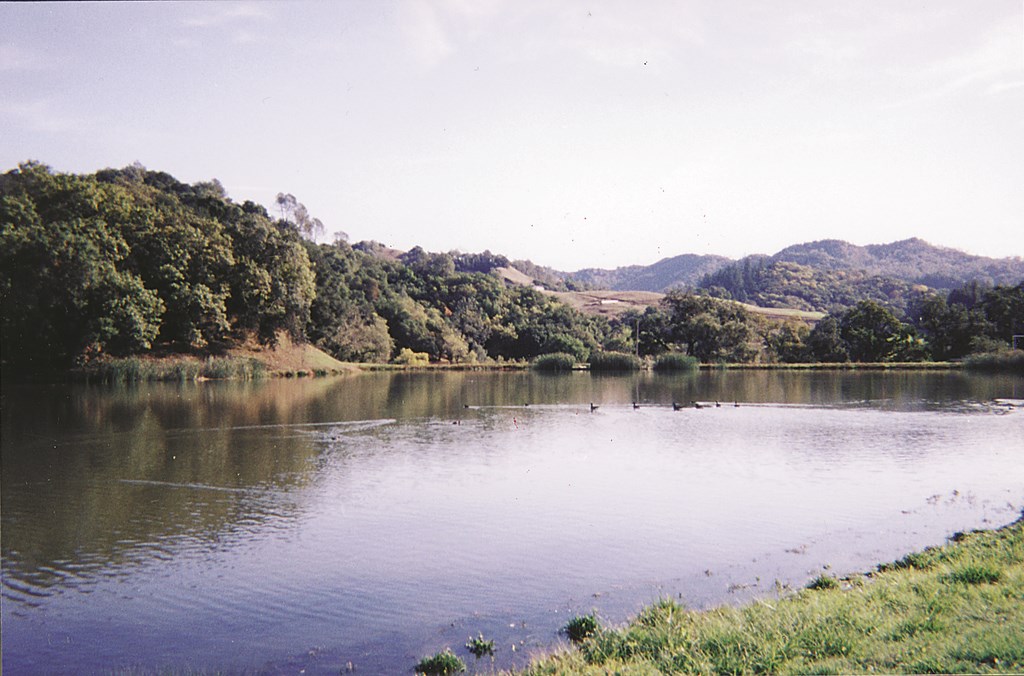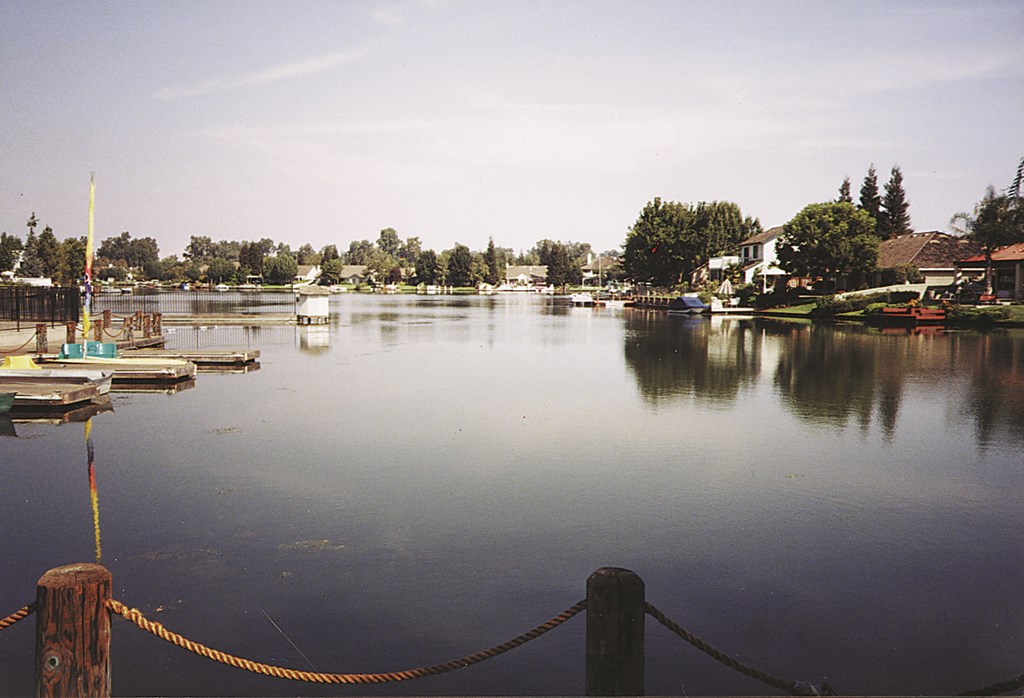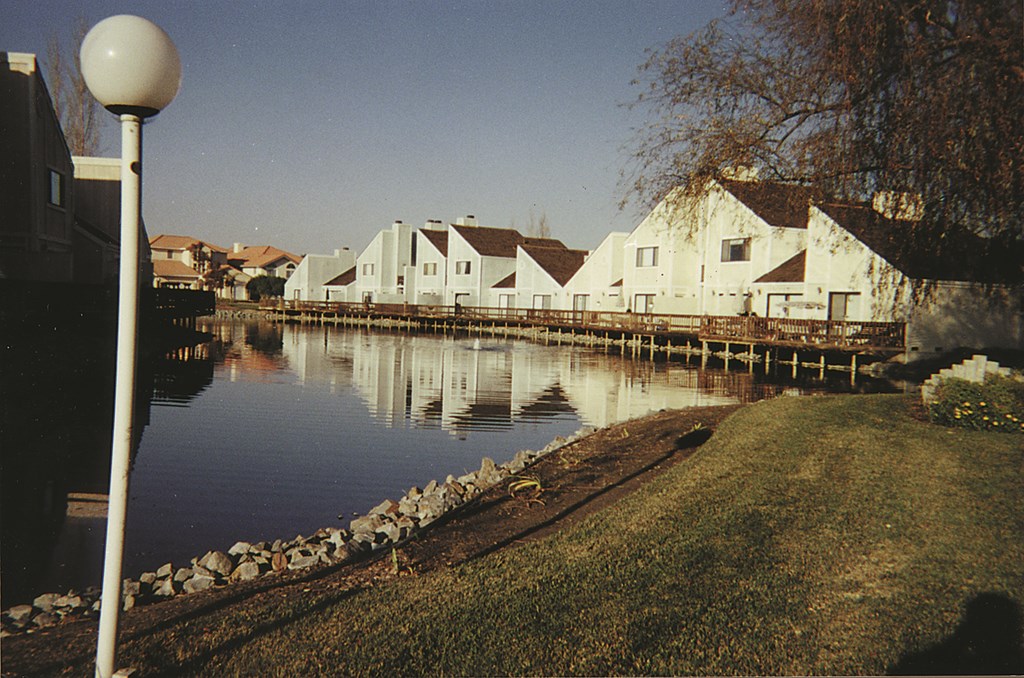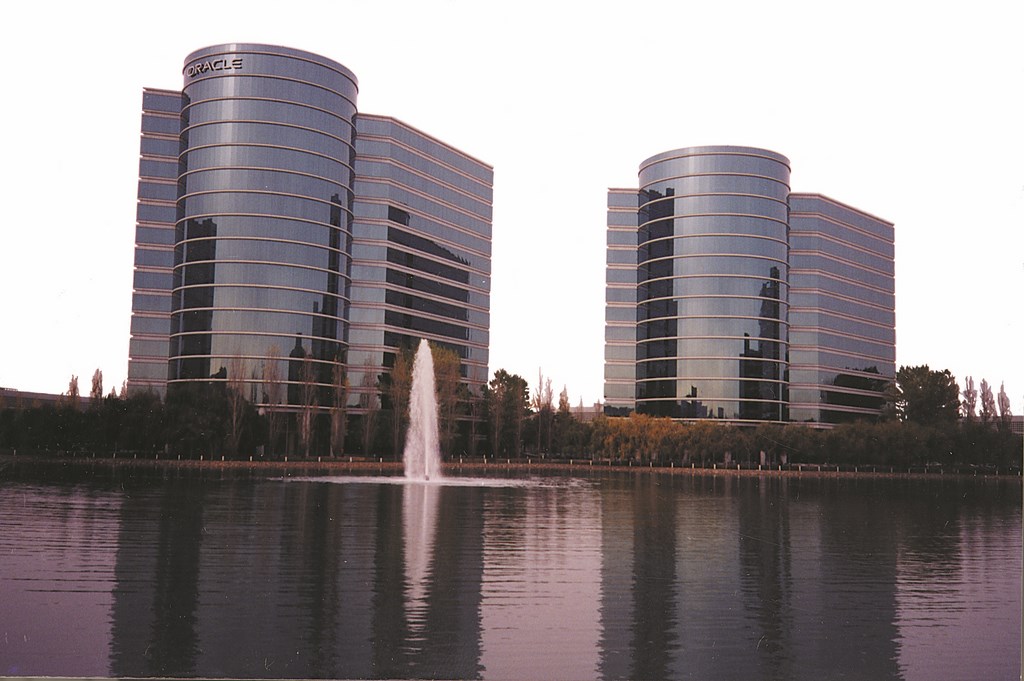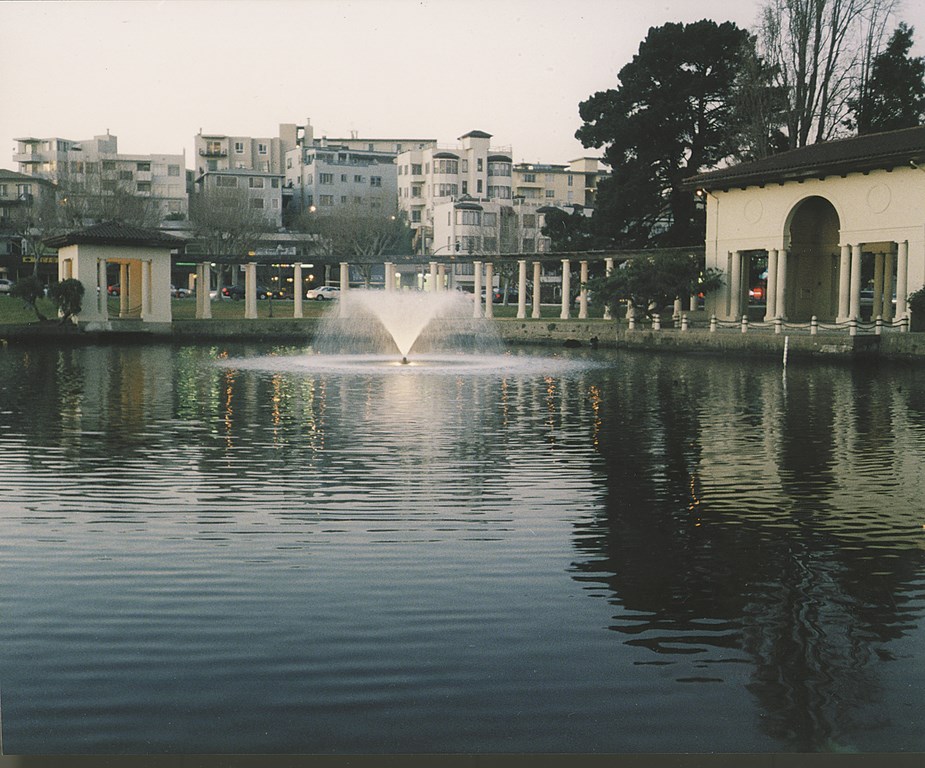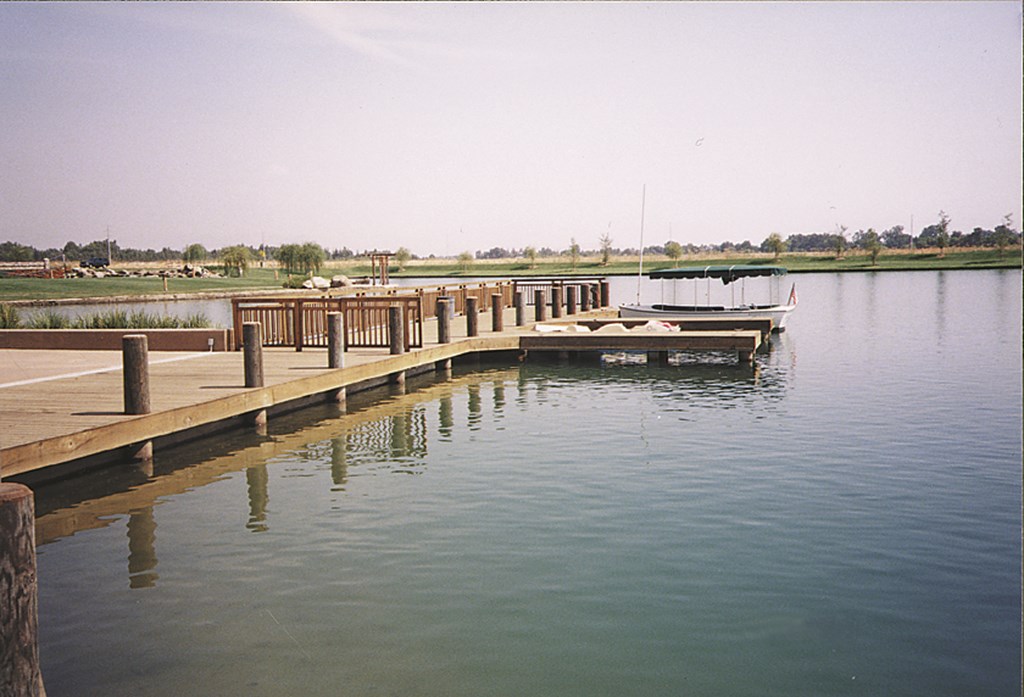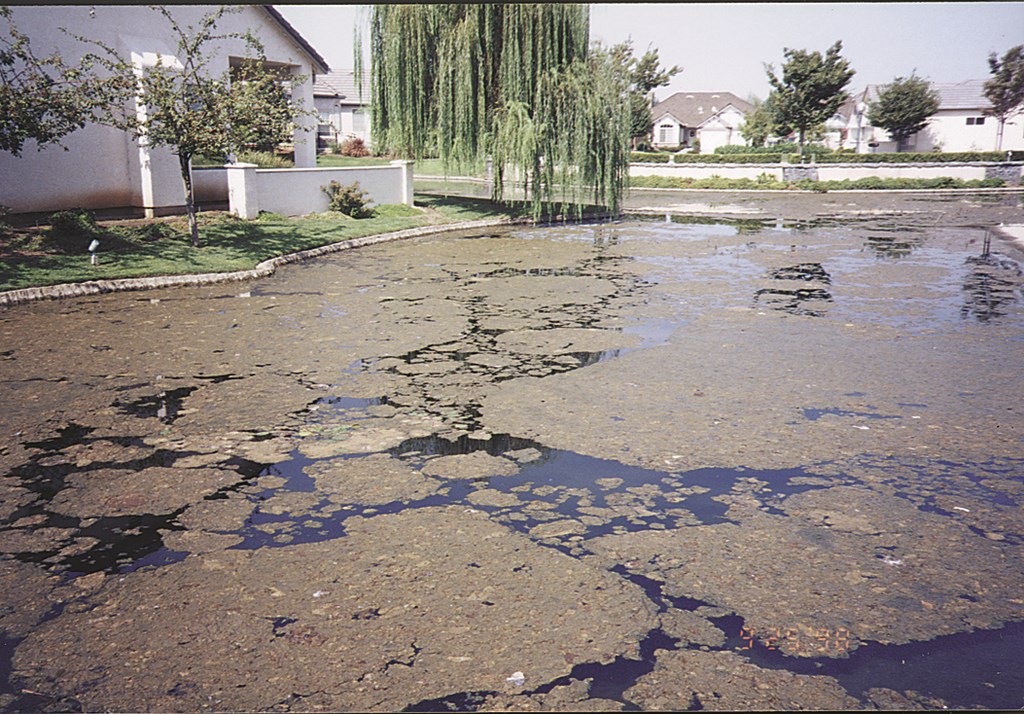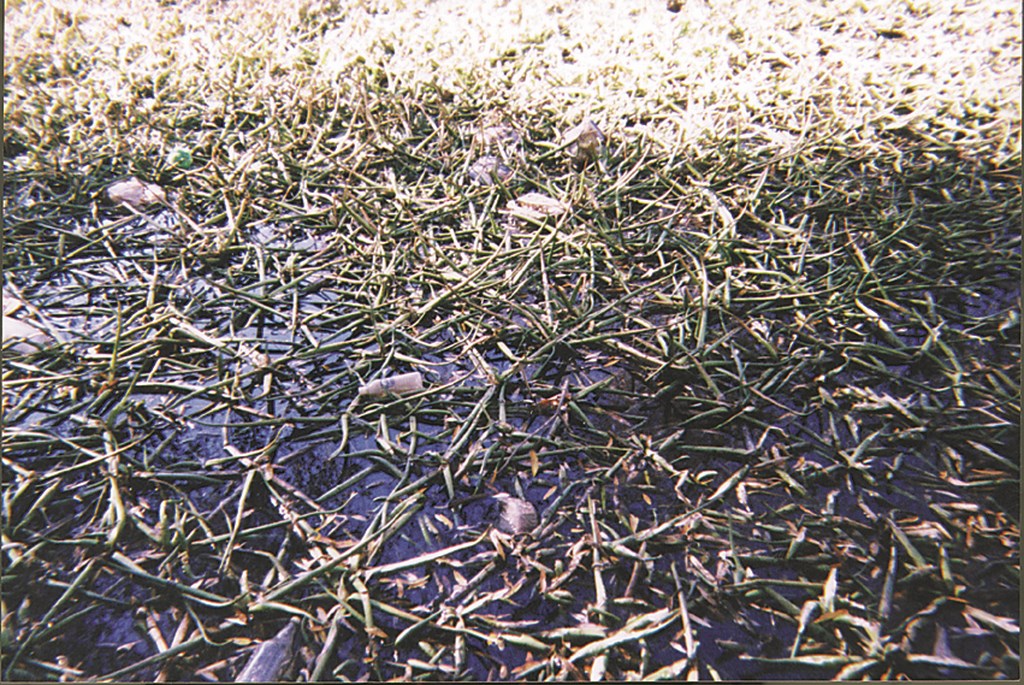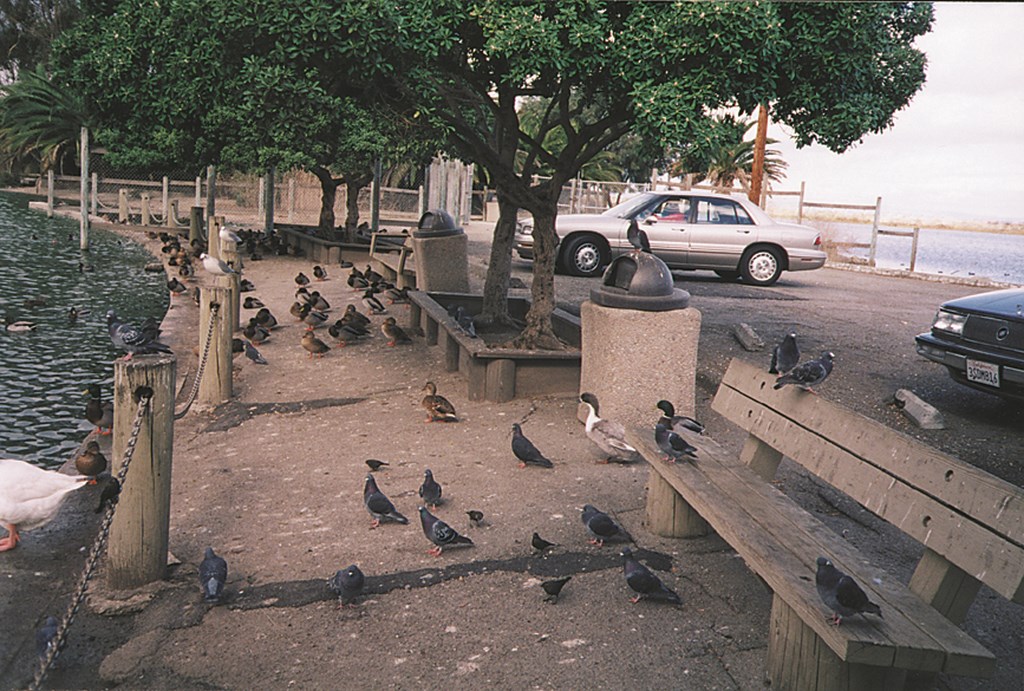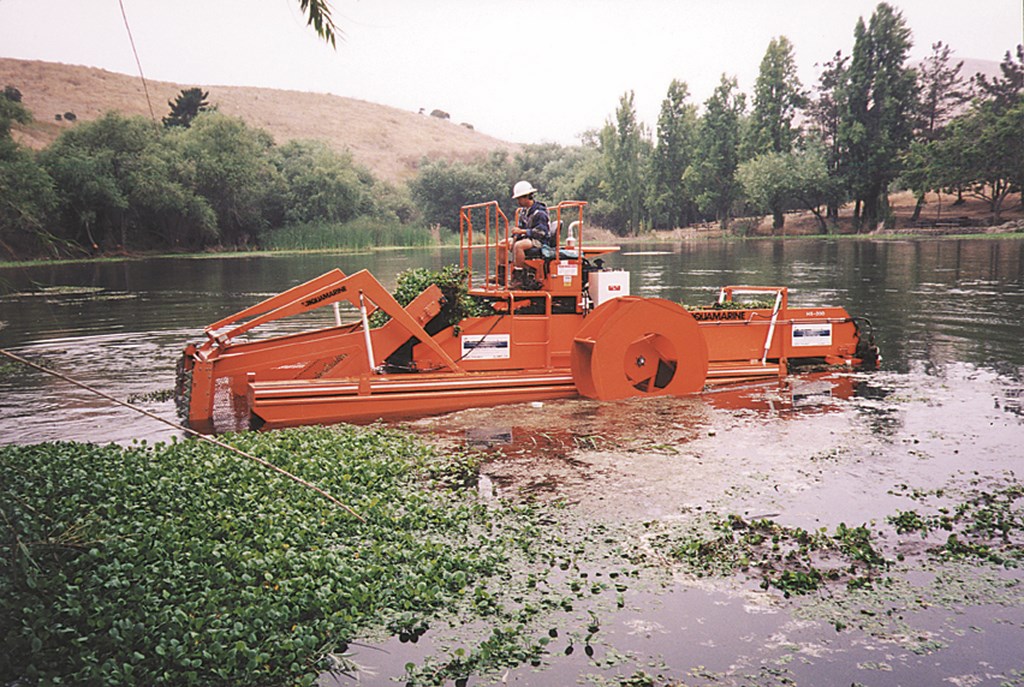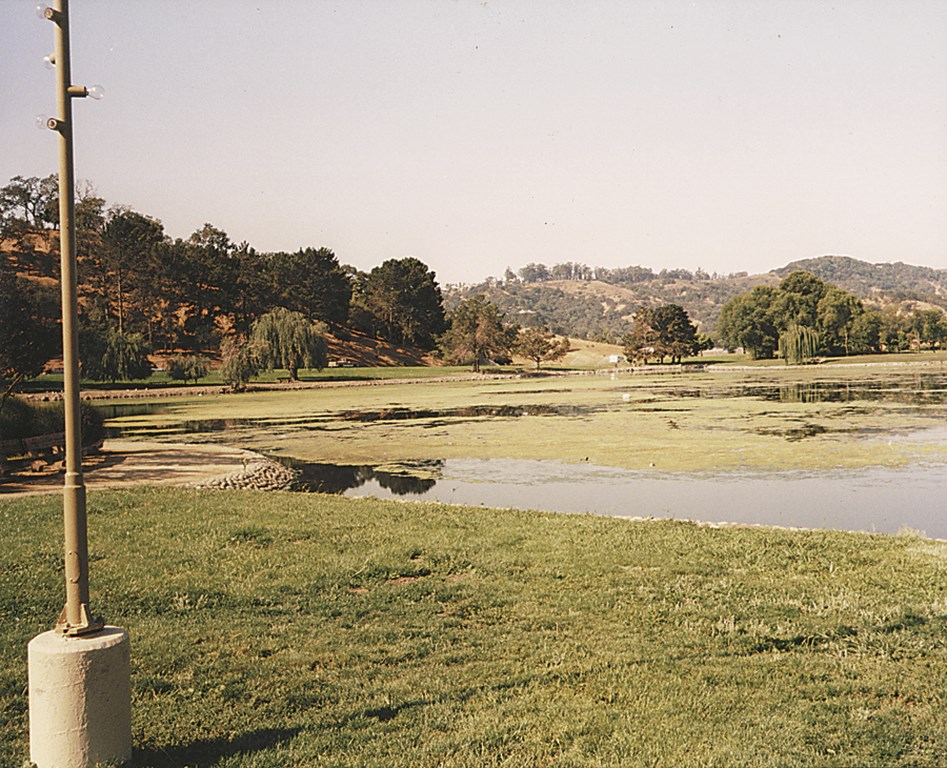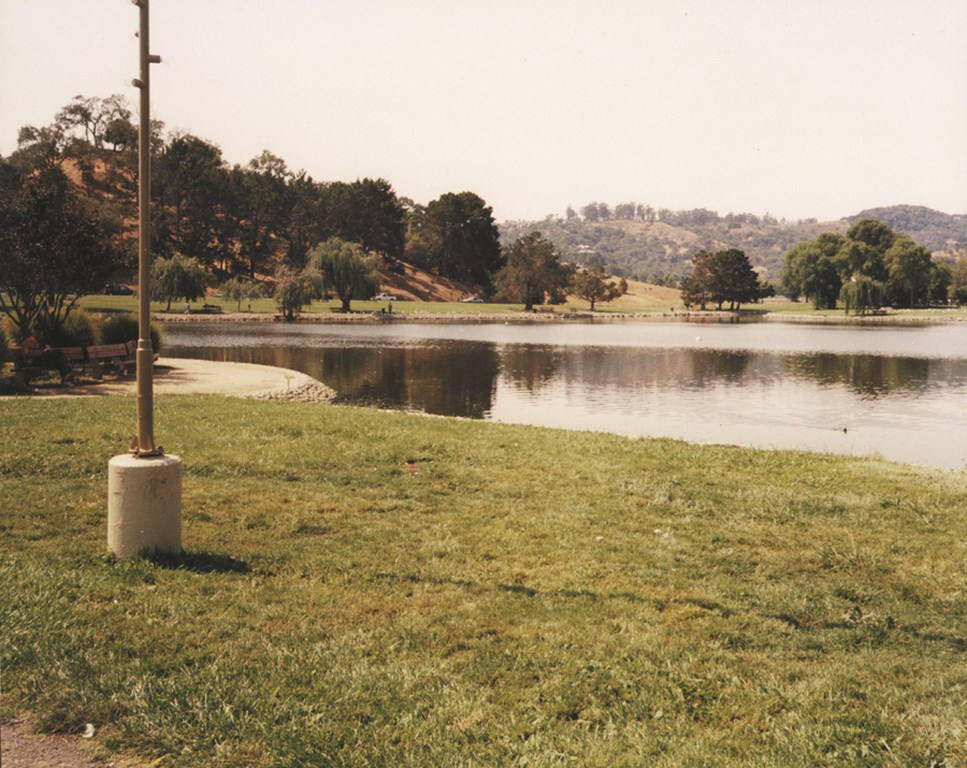Little Great Lakes
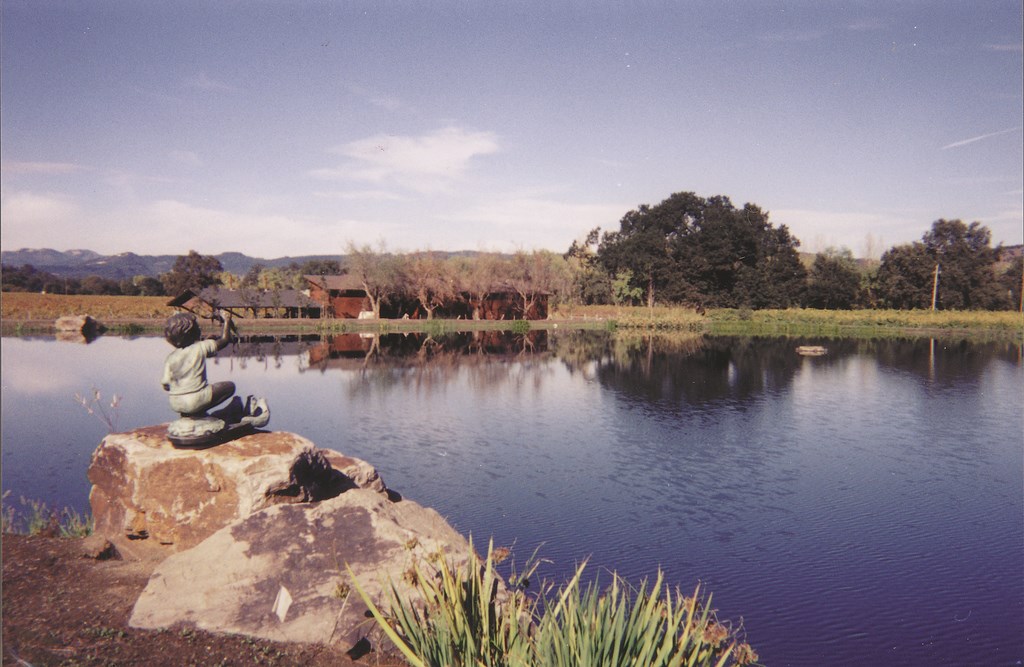
What is good lake construction? What makes some pristine and beautiful while others seem fetid and slimy? To discover the answer to these and other questions, we need to start by defining what we mean by “lake.”
It may seem arbitrary, but the distinction can be an important one, especially to people who own them. You don’t want to insult anyone by calling their lake a pond or lagoon, for example. By the same token, you don’t want to seem ill-informed or unprofessional in referring to their waterfeature as a lake. Given the different ideas people have about what these terms mean, I take the tactful high road and refer to most everything as a “body of water” until I’m certain.
I bring this up because terminology can get confusing with respect to lakes – and is something that must be straightened out to make these fascinating watershapes more accessible to professionals as well as their clients.
As a “lake contractor,” our firm specializes in design, installation, management and aquatic remediation. In other words, we build many new lakes and troubleshoot and fix many others that are experiencing problems. In this line of work, the definitions we use help us determine an accurate scope of work and/or develop a sound maintenance program. In doing so, we’ve come to understand the key components that make lakes work on one hand – or turn them into mosquito pits on the other.
WHAT MAKES A LAKE?
Back to definitions: Anyone can look at Lake Tahoe and be correct in the assumption that it is, in fact, a lake. But what makes it a lake?
According to Webster’s New World Dictionary, a lake is “a large inland body of water,” but that’s too vague – and gets even more obscure when you consider regional definitions and what constitutes a lake in, say, Minnesota as opposed to Arizona.
The definition we choose to use in our work is more precise, but still general enough to apply across a broad range of circumstances: “A lake is a body of water, captured by natural or man-made means, effectively being a minimum of one surface acre in size, and will typically support an ecosystem without human interaction (or minimally thereabouts).”
Having an acre as a guideline helps, but that’s not quite enough, because a lake with a one-acre surface that is only 12 inches deep doesn’t fit this one-size-fits-all description. In other words, a lake, by definition, must also have some minimum volume or depth. Therefore, in addition to possessing the one-acre surface minimum, a lake also must have a volume sufficient to support the ecosystem, year ’round.
| This lake is just as man-made as the sculpture that “plays” beside it. Successful mimicking of nature is the key to this sort of watershaping project – that, coupled with a sharp awareness of local geography and climate. |
This leads us to an immediate problem for many bodies of water aspiring to be lakes: For example, that 12-inch deep acre of water will most likely be a skating rink during the winter months and a Petri dish full of pungent green, yellow and brown algae during the warmer summer months.
So what is the minimum depth? We consider a “treatable” body of water to be a true lake when the depth and volume are stable from season to season, have sufficient depth to support the use of watercraft and have a minimum volume of 1,000,000 gallons. Thus, a one-acre lake of three-foot-average depth would be just shy of a million gallons.
Beyond basic issues of size, volume and depth, the more compelling question about our body of water is about whether it supports an ecosystem. If not, why not? In answering that basic question, we need first to define ecosystem and what it takes to know if this body of water we now have defined as a lake with respect to size, volume and depth will actually support one.
That may seem a devilishly complicated question, but it’s generally pretty straightforward: Only under the most extreme situations – elevated pH, increased temperature or localized toxicity – will a lake as we’ve defined it not support some form of ecosystem. Even fish fry qualify as an ecosystem here and tend to lead to more sophisticated systems that support not only fish and invertebrates, but also waterfowl and reptiles as well as many other forms of wildlife.
So once we have life, our outsized body of water is very close to deserving all of the respect and accolades due a lake. But there’s one more factor to be considered: intended use. More than anything else, what ultimately defines a lake and how it’s designed is that intended use. Whenever our firm designs a new lake, the majority of our efforts focus on this intention and how this functionality will be maintained.
THE ARTFUL HAND
As we’ve seen, lakes can be broken down into several categories based on intended use. They can also be broken into two over-riding classes: natural or man-made.
• Natural lakes occur as a result of nature finding a low collection point or location in which water is captured and held for an indefinite period of time. These lakes have earthen, rock or some other semi-impervious bottom material that allows the water to remain captive. Unless fed by an underground water source, most lakes will have a natural form of flow-through circulation, fed by surface sources like streams and drained by them as well.
Although not every natural lake is perfect in the circulation aspect, in general Mother Nature seems to hit a lot more home runs than builders do in this respect. In other words, natural lakes tend to work just fine on their own, and we can learn a great deal by looking at them from a design and engineering standpoint.
• Man-made lakes are just that – our imposition of a lake where nature didn’t create one or intend for one to be created. To my mind, this is a fairly arrogant exercise, but it can be done effectively.
|
Ponds and Lagoons As mentioned in the adjoining story, anything smaller than an acre isn’t a lake, but does that make it a pond or lagoon by default? Not quite. Let’s step out of this swamp with a couple more of the arbitrary (but sensible) definitions we use in our work. If a lake is defined as being greater than one acre in surface area and has a volume of approximately 1,000,000 gallons, a pond is smaller in both measurements. Typically, that means a pond is small enough that you can toss a rock over it in any direction so long as it has a simple shape. For its part, we see a lagoon as a body of water that has “fingers,” coves and generally abstract shapes. These are not limited to one surface acre and often are larger, but they tend to have consistent depths in the 1-to-7-foot range – too shallow for the typical lake. – G.F. |
Lots of man-made lakes excel in the aesthetics department, but they tend to fall short when they seek to improve upon nature rather than mimic it. This is, in fact, the most common problem in lake design and the one we as a company are most frequently called upon to remedy.
If the water is clear, can’t we just make it clearer by adding a sand filter? If that doesn’t work, then why not try some algaecide, chlorine, flocculating agent or even dye? This impulse of lake managers to try continually to improve on nature is understandable but frightening, especially since the time-tested answer is right in front of us – that is, to build as much like nature as we can.
It is easily understood that not all sites and conditions are perfect for lakes, which is precisely why nature failed to put one there in the first place. What happens is that someone with a better idea comes along and changes the site to accommodate a lake by expanding an existing creek or pond. It may serve an intended need, but will it work as a lake?
In many cases, the answer is no. The approach results in man-made problems not initially associated with the site, including rapid water loss and increases in nutrient load that cause chain reactions of problems that might even mask the initial culprit. This is not to say that these situations cannot be rectified, but the truth is that any modifications to an existing ecosystem might take years to undo – if in fact they can ever be undone.
DOING WHAT NATURE DOES
As lake contractors, our goal is to re-create, as closely as possible, what nature has done rather than shape a rustic, oversized swimming pool. Understanding this one, basic distinction will save tall dollars and a tremendous amount of grief.
First on our list of concerns is whether the new lake will actually hold water. In most areas of the country, if you dig a hole, fill it with water and wait, the liquid will disappear in a few minutes, hours or days. Minnesota is a noteworthy exception: In most places outside “The Land of 10,000 Lakes,” however, some form or other of water-retention amendment will be required.
If you are fortunate enough to have a site that has excellent retention capabilities, you need only to address two or three other issues (growth of aquatic vegetation, sedimentation and nutrient reduction, which I’ll get into in just a bit). In most places, however, you’ll need to step in and add something that will enable the site to hold water.
One possibility is the use of PVC or HDPE liners. Beyond the matter of the size of such a liner, you need to recognize that this same soil that tends to drain so well is also subject to rising groundwater. (Think large, black bubbles in the center of the lake.) Yes, there are engineering solutions to groundwater issues, including drainage, water recovery and hydrostatic relief, but you’d be well advised to consider other options first.
| Lakes are being installed in lots of places Mother Nature never would have thought to put them, including business parks (top left), personal residences (middle left), agricultural settings (middle right), public parks (right) and housing developments (bottom left). Making long-term results align with the owner’s desires in commissioning such an outsized watershape is a substantial challenge. The key, I’ve found, is doing all that can be done to shape systems according to natural models. |
One of these is Bentonite lining. Bentonite is a soil amendment that, when blended into the upper 6 to 12 inches of the soil, forms a gelatinous, semi-impervious water seal. Other products on the market include surface-applied sealants. But if your client is paying your firm to create a lake, it might not be best to wait until after the lake is filled to find out if it will or won’t hold water.
Impervious finishes such as plaster, concrete or gunite are also options as water barriers. In California, for example, most reservoirs, aqueducts and storage basins are of concrete construction. There are two major factors when it comes to these “placed” materials, the first being considerable cost and the second being elevated winter water tables and expansive soils that can spell disaster for this type of construction.
This is not meant to dissuade anyone from using these materials. Suffice it to say in all cases that initial planning will have to involve exact determination of intended uses of the lake, designing accordingly – and covering all necessary bases when it comes to soils engineering for a substantial bit of real estate.
WORKING WITH THE WATER
Lakes are not unlike swimming pools and other man-made bodies of water when it comes to hydraulic considerations and the means used to deal with water flow.
[ ] Flow through: In nature, a lake or body of water usually has distinct points of inflow and outflow. A flow-through lake almost always appears to be in good health, due in large part to the constant mixing and exchange of water.
Because this is not feasible in many man-made applications, recirculation is necessary. It can work, but as previously mentioned, Mother Nature seems to have a distinct advantage.
|
Beyond Definitions To be sure, lakes can be used for a variety of purposes. On estates, for example, these bodies of water are often there purely for aesthetic reasons. On golf courses, however, they might serve as sources for irrigation and as catch basins for runoff. Still other lakes are meant for swimming, in which case water quality is a big issue (and slightly less of one if wildlife will be the main users). In any event, maintenance (or the lack thereof) is something that comes into play. All of these issues (and more) must be thoroughly examined and discussed in detail with the client before a drafting pencil is set to vellum. The devil truly is in the details in lake design, and the more understanding both you and the client have, the more successful and cost effective the project will be in the long run. Look at it this way: Anyone can dig a hole, fill it with water and call it a lake – farmers and ranchers do it all the time. But it takes real understanding to build a lake that will be beautiful, healthy and happy for years into the future. And don’t forget time in your planning: Lakes and ponds and lagoons all require a period of time to “mature.” This can be anywhere from a couple of years to a decade or more, depending on the size, location, climate and a host of other influencing factors. You also don’t want to be fooled by initial aesthetic success: In their first years, most lakes are trouble-free and won’t exhibit much by way of growth of aquatic vegetation and algae, sedimentation effects or problems with turbidity or water chemistry. Once the lake is past that point, however, any problems you invited by not covering all the bases in your design work will surely come back to haunt you! – G.F. |
In a natural lake, water will either flow in or percolate up throughout the year. At the other end, the water will typically flow out via a stream or watercourse, therein creating a circulation system under the broadest interpretation. In many circumstances, this flow-through effect can be recreated in man-made lakes, but the conditions have to be right: There must be a ready source of water to meet the flow-in requirement as well as a place for it to go.
[ ] Mechanical/re-circulatory: Man-made lakes have for many years run on the strength of re-circulating pumps. Until recently, the idea was a direct transfer from the pool industry, wherein suction lines (usually with some sort of skimming system) and returns were laid out to create circulation and collect debris.
The problem arises in the fact that a lake is not a swimming pool, and so the operating principles are not completely interchangeable. Where a pool’s water system is sustained and facilitated by a range of chemicals, for example, those same chemicals are not suitable for use in any lake’s ecosystem. Filtration by means of sand or cartridge systems is another pool-to-lake crossover we often encounter, but no filters are designed for use in the face of such challenges.
These filters indeed work well on pools of various sizes, but you don’t get the same results with a lake. The particulates are larger than the filters are designed to accommodate, and there’s simply too much material to be removed at any size. Aside from the huge volume/acreage factors, maintenance of these filter systems represents a lifetime of costly intervention for the client.
A far better option with lakes is bio-filtration – a new “technology” in the lake-building community but one with a track record as old as Mother Nature herself.
Manufactured bio-filtration systems are mechanically altered versions of what naturally occurs in lakes. These filters provide a place for bacteria (often referred to as microbes) to grow and flourish. In turn, these organisms colonize on the filter and grow in response to the available food source in the water column – ideally at a somewhat faster rate than algae or any nuisance vegetation.
| Aeration is a major factor in the health of lakes. In cases like these, meeting that need serves additional aesthetic and design purposes – on the one hand by installing a jet of water to echo tall background structures (left) and on the other by setting up low arcs of water that squatly conform to the proportions of the peristyle on the shore (right). |
Many factors have to be in place for this natural system to take hold, not the least being water chemistry (pH, alkalinity and more), temperature and dissolved-oxygen levels. The key here is aeration.
Aeration is indeed the lifeblood of both natural and man-made lake ecosystems. Many of us have winced at the pungent, sulfurous odor emanating from a fluorescent green body of water that once seemed to be a lake. Although ingredients that lead to this sorry state vary, it is most often caused by anaerobic conditions – that is, a lack of oxygen.
Aerating the water column (that is, the process of adding oxygen to a body of water) serves two key functions, the first being to increase dissolved oxygen levels to support almost every living entity within the ecosystem, and the second being to reduce stagnation and the thermal layering also referred to as stratification.
ALL LAKES ARE LOCAL
So far, we’ve surveyed size, depth, function, circulation and aeration as key considerations in lake design and taken a slight jog over to embrace soils engineering as a major factor in the process. These are factors that come into play wherever you work (even in Minnesota!), but there are others that influence design on a regional or local basis.
These regional (or what we refer to as elemental) effects play a huge part in design, construction and overall maintenance (or lack thereof) for a lake. In California, for example, our seasonal problems differ dramatically from north to south, and monumental differences are observed as you move across the country through different climates and geological zones.
Certainly, there are constants that will hold true regardless of geographical location, but there’s no denying the fact that it helps to know your region, its soils and seasonal patterns. These factors will influence physical structures (including the containment strategy) as well as maintenance routines. It’s easy to make the mistake of traveling to an area in the warmth of the spring and base a design on that snapshot of prevailing conditions. Trust me, those conditions are subject to changes that can wreak havoc on your lake.
Beyond the weather, there are a number of other variables to consider in good lake design:
[ ] Availability of water: What is the source of your make-up water? Is it readily available via spring or well, or must it be purchased from the local water agency? As with a pool, anywhere up to an inch per day could be considered average for evaporation during the warmer months. That’s 2-1/2 acre feet of water per month or approximately 815,000 gallons monthly off a single acre-sized lake!
[ ] Soil or ground conditions: This refers back to the water-retaining ability of your site. It’s extremely difficult to add soil amendment to sandstone, for example, so a lake in such an area will require a liner. In some cases where a liner is impractical, you might be helped by an impermeable layer known as hard pan; the trick here is determining how far down you have to go to find soil that will hold water. You also need to know about geographical/geological features such as rock outcroppings or ground water.
[ ] Temperature: Anticipation of seasonal changes will influence your design in every aspect of the project. Under-standing the relationships between thermal changes and the ecosystem will greatly assist in the long-term health and aesthetics of the lake.
[ ] Waterfowl populations: The phrase “build it and they will come” could not be more accurate in this respect. Ducks, geese, coots and other waterfowl will show up in significant numbers at just about any suitable body of water – a significant influence on the nutrient load and on areas adjacent to the lake that is exacerbated by the overwhelming desire of humans to feed these creatures. This results in migratory birds becoming not-so-migratory and the increased likelihood of avian botulism or fowl cholera, both of which will kill entire populations in a very short period of time.
(Our staff spends a lot of time educating clients and their lessees, tenants, park patrons and others on the effects of feeding the “poor, little starving birdies.”)
[ ] Nutrient load: This factor and its reduction will determine how the project will appear in a very short period of time. Many types of control are available for use both pre- and post-construction; I believe that it is always more cost effective to negate the potential problem in the design stages of the project through natural nutrient extraction via aquatic plants and the use of biological filters.
Once a problem does exist, we’re left with post-construction control-and-management measures, including the introduction of exotic species such as grass carp, chemical applications such as herbicides and algaecides, and/or mechanical control by dredging or harvesting.
MUCH TO KNOW
There’s all of this to know and more when it comes to working with lakes. For all that, it’s a fascinating field – and one that has its share of similarities to other sectors of the watershaping industry. But as I’ve stressed here, making too much of those similarities can lead to difficulties.
Given those difficulties and the complexities of designing, engineering and building on such a large scale, most firms operating in this field thrive by having lots of history and experience behind them. But the ever-growing popularity of “living waterfeatures” almost certainly is leading to customer inquiries about including lakes in extensive landscape-design projects, and this article is intended to introduce valuable concepts and a range of important cautions to those who might be inclined to pursue this new path.
Lakes are indeed complex and live by their own set of rules. The first step in avoiding the nightmare of installing one without a solid understanding of what makes them tick is knowing the kind and caliber of questions and issues that must be addressed in the design phase.
George Forni is president of Aquatic Environments, an Alamo, Calif.-based design, installation and service firm specializing in lakes, ponds and other large waterfeatures. He started his career in the waste- and reclaimed-water industry in the mid 1980s. Before long, he became project manager for an aquatic service firm, for which he managed a number of projects in conjunction with the U.S. Army Corps of Engineers as well as in other regulatory agency-controlled jobs. His company now focuses mostly on the needs of large commercial clients in the Western United States.











